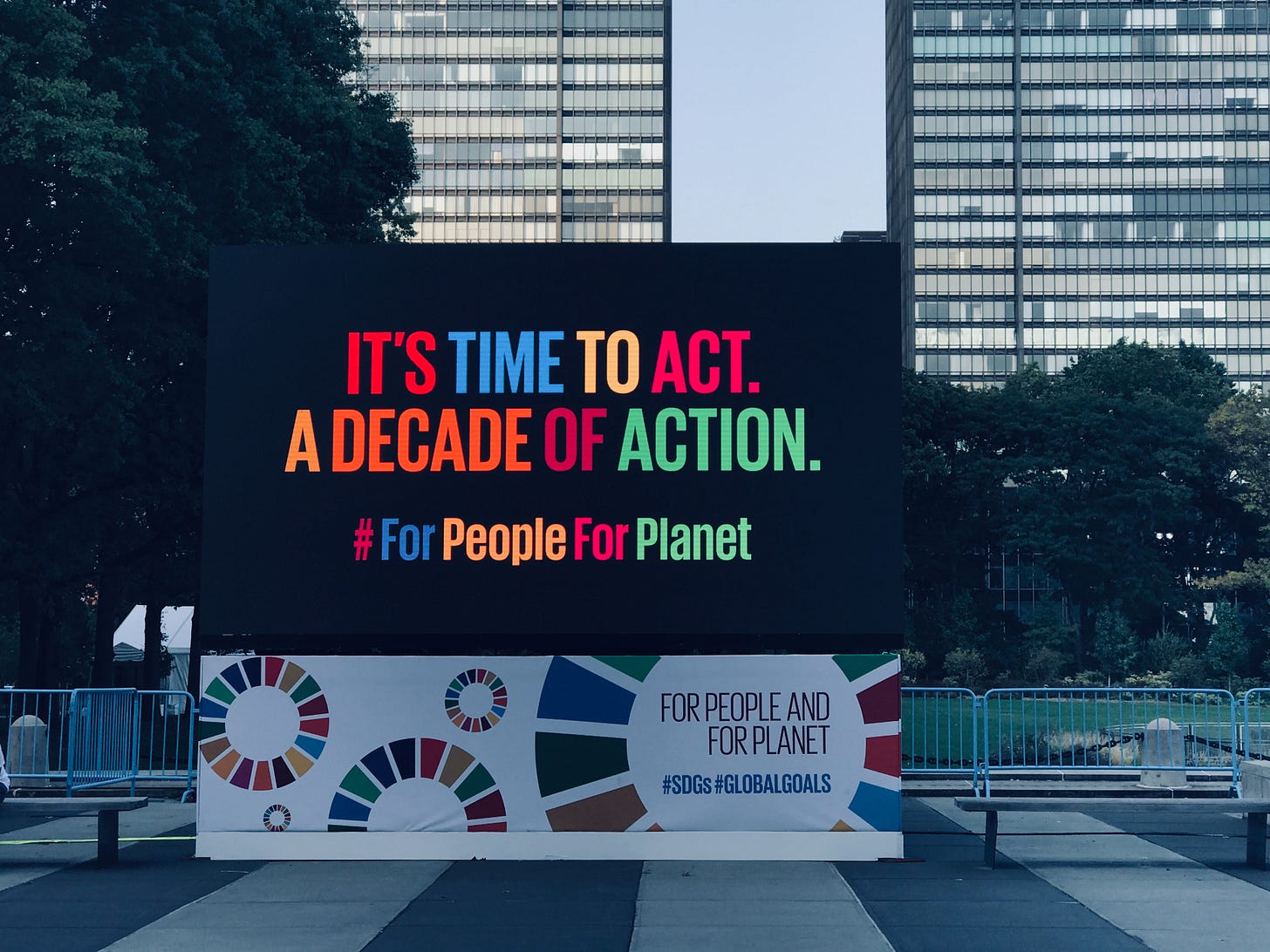An argument to boost scientific input to the SDGs
🌎 The UN needs to get imaginative and seize this opportunity.
Welcome to WorldWise, a newsletter to help discerning readers get truly global insight where current affairs meet humanity, written by Anita Makri.
This is the WorldWise View edition, with analysis and some of my favourite sounds.
👉🏽 If you like what you’re reading, consider sharing the post and inviting a friend to subscribe.
It’s about making change more feasible.
A Nature editorial this week argues that the scientific input to the Sustainable Development Goals (SDGs) has a chance to help put the goals back on track, if it can work differently than currently planned.
Conceived as a package of 17 goals and associated targets to be met by 2030, the SDGs represent an integrated set of economic, environmental and social aspects of a healthier and more sustainable world.
The formal scientific input to this UN-led international effort comes in the form of the Global Sustainable Development Report (GSDR). Last October, the UN Secretary-General appointed 15 independent scientists to draft the second of these reports. They’re meant to be produced every four years to provide an evidence base for policymakers tasked with making progress towards the goals.
But it was 2016 when that plan was made—in a different world. The goals are not being met, and as we saw a few months back, what little progress had been made in the five years since they were adopted has stopped on its tracks as the world battles through the coronavirus pandemic. Debt is rising and economic growth forecasts are being slashed, leaving countries and agencies with even fewer resources to put weight behind this agenda.
Against this backdrop, it makes little sense to expect progress while largely sticking to the same goals and processes. This opens up an opportunity for the scientific input to make a meaningful contribution in an attempt to steer countries towards meeting the goals.
But what can the scientists involved realistically do?
The process is running on what sounds like a shoestring budget. Their task is already daunting, and meaningful convening is harder without physical meetings. Quite apart from resources, the scientists’ responsibility for input is just that—there’s little direct influence on what countries or agencies will or won’t do.
The authors of the first report, aware of the many interactions between the 17 SDGs, recommended that nations consider approaching them through a smaller set of 6 ‘entry points’. My conversations with some of the people involved in the second report suggest the intention is to build on this framework by adapting it with a regional focus.
Energy is a case in point on why this matters. You can have a coal plant power plant almost anywhere. But to rely on generating solar and wind energy, you need to know the conditions in a specific location.
Research on post-COVID recovery will also be considered, but the GSDR does not see itself in a role of guiding that recovery. Issues brought to the fore by the pandemic may be given more emphasis to seize the political momentum—one example is how inequalities in broadband access are affecting education, and therefore development across generations. Also on the table is a stronger focus on solutions to the trade-offs between goals, such as food production and environmental sustainability, and a closer alignment with other global agendas such as the UN biodiversity convention to ensure they support each other in the long run.
It all makes for a sensible approach. The problem is, it amounts to a nudge for countries to look in the right direction—and it won’t be enough to help them steer the ship.
The scientific input to the SDGs needs a sharp vision on what its outcome and impact will be, and—as the Nature editorial describes—it needs a more engaged process to get there.
That process should be designed to support rather than burden the new GSDR team. However eminent and carefully selected, 15 scientists can’t carry the weight of evidence for a global agenda on their shoulders. Plus, this scientific input already straddles a fine line between political sensitivity and independence.
The UN should encourage governments to see the GSDR not as a report card to be nervous about—that’s what the annual SDG progress report is for—but as a resource to find a sustainable trajectory post-COVID. If it expects a different outcome than currently projected for 2030, it needs to get imaginative within the constraints of this ambitious agenda.
A final note from the week’s soundtrack 🌎
WorldWise is an independent newsletter—thanks for your readership and support.
Thoughts to share, or something I missed? Hit reply or leave a comment.
Enjoying it? Share and invite others to subscribe, or just tap the heart button.
Want more global journalism? Get in touch to discuss sponsorship options.
📬 Find out more and subscribe | 🙏 Support on Ko-fi | 🔹 Follow on Twitter




